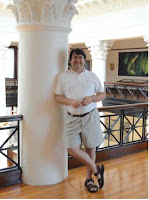Opinion: Rush to Gotcha
It is sad but not surprising that the echoes of the bullets at Tree of Life in Pittsburgh had barely faded when politics, partisanship and accusations started to take over.
As is often the case in complex stories and the rush to get information out, there were plenty of errors in the immediate coverage from Pittsburgh, some of which persist on social media.
Some were relatively minor, such as the erroneous reports that the 97-year-old woman who was killed, Ruth Mallinger, was a Holocaust survivor.
It was also quickly assumed that the shooter was inspired by President Trump, but it eventually came out that he hated Trump, who he saw as a merely a puppet of “the Jews.”
That rush to judgment came back just before this issue wrapped, when a man shouted “Heil Hitler, Heil Trump” at a production of “Fiddler on the Roof” in Baltimore. After the social mediasphere declared him just another Trump true believer, it turned out he shouted that as a protest at the hatred he perceived as coming from the administration. A few glasses of wine before the show also didn’t help his judgment.
While the Pittsburgh attack was an unprecedented murder of Jews at prayer, it is far from unique. Have we forgotten the 2014 shooting at the Jewish Community Center of Greater Kansas City, where three were killed (ironically, all of them non-Jews); the 2006 Seattle Jewish Federation shooting where one was killed; the 1999 Los Angeles JCC shooting — all of which predate “Trump’s America.” Not to mention the numerous synagogue bombings during the civil rights era, including what had been the worst attack on a Jewish prayer service, in Gadsden in 1960.
One of the more egregious stories after Pittsburgh came courtesy of Ha’Aretz, which published a story alleging that in the newspaper Makor Rishon, Israel’s Ashkenazi Chief Rabbi David Lau refused to refer to Tree of Life as a synagogue because it is not Orthodox.
The author of the Ha’Aretz piece, incidentally, is the same one who wrote a thoroughly misleading piece in August about Birmingham’s JH Israel and the National Leadership Center in Ariel, which led to this publication’s article correcting the record.
As often happens, reporting from the Ha’Aretz piece about Lau was picked up by the Washington Post and spread from there to the Associated Press and beyond, with commentators trashing Lau for his insensitivity.
The story spread like wildfire on social media and was seen as just another example of the rabbinate denigrating the non-Orthodox streams of Judaism. And how much worse, to do so in the immediate aftermath of such a tragedy. But anyone going to the original interview saw a completely different story. Lau sought to shut down any discussion of what flavor Tree of Life is, because “it has no relevancy to what happened. We are talking about Jews murdered because they were Jews… Does it make any difference which synagogue they attended or which liturgical text of prayers they were reciting?”
In the original Hebrew, he did use the term for synagogue.
He was further pressed by reports that some publications catering to the Orthodox world referred to a “Jewish center” rather than synagogue. After saying he often dislikes what those publications say and “sometimes there is no connection between what they write and the reality,” he reiterated that “we are talking about Jews.” While he said he has strong ideological disagreements with other branches, “so what?”
He continued, “Jews were killed in a location that the murderer saw as having a prominent Jewish character. A place with Torah scrolls, Jews wearing prayer shawls, a place with prayer books, where people came in order to be closer to G-d. This is why the murderer came specifically here and not somewhere else in order to kill.”
JTA was among the outlets running stories about Lau’s “refusal,” relying on the Post story, but Editor-in-Chief Andrew Silow-Carroll later wrote that Lau did not deserve the headlines.
In another story, headlines blared that Vice President Mike Pence had invited a rabbi to say a prayer for the Pittsburgh victims, but the “rabbi” turned out to be “messianic.” Naturally, those who are not fans of the current administration were eager to jump all over him on social media for his insensitivity to Jews.
It turns out the story was much more bizarre. Pence and his office had nothing to do with the appearance of Loren Jacobs at the Michigan campaign event — Jacobs had been invited by the local Congressional candidate, Lena Epstein, who is Jewish. All Pence had been told was that there was “a rabbi” present, though when he ended his prayer “in the name of Jesus,” that should have been a tipoff.
When the backlash began, Epstein cited her four-generation membership at a synagogue in Bloomfield Hills, Mich., where she is a past board member and her daughter received her Hebrew name earlier this year. She said she invited Jacobs “because we must unite as a nation — while embracing our religious differences” after what happened in Pittsburgh.
That the “messianic” movement exists to try and convert Jews to Christianity, and that having people who were murdered because they were Jews memorialized by someone whose entire job is to convert Jews is at the very least insensitive, seems to be completely lost on her.
In fact, she said anyone complaining about Jacobs’ appearance “is guilty of nothing short of religious intolerance and should be ashamed.”
She is the one who should be ashamed. It is akin to, after the 2016 massacre at the gay nightclub in Orlando, asking a pastor who specializes in “pray the gay away” conversion therapy to offer a memorial prayer.
Should Pence, upon hearing the “rabbi” reference Jesus, have stepped away or caused a scene? Some who think so have been silent on Bill Clinton and other dignitaries nonchalantly sharing the stage with notorious hater Louis Farrakhan at Aretha Franklin’s funeral. Is a funeral an appropriate place to register disapproval, either?
So much of this speaks to the polarization in our society, of the “gotcha” nature of partisanship, the willingness to believe the absolute worst about those on the other side of the spectrum.
The propagation of false narratives — yes, one may even call it “fake news” — doesn’t help. Whenever possible, such wounds should not be self-inflicted through the haste to point fingers at “the other.”
That, in a way, is what got us here.
by Lawrence Brook, editor




